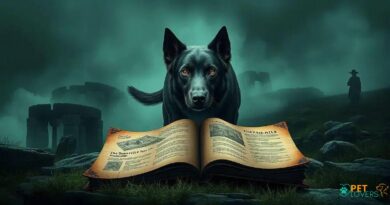O que é ancient breeds
What is Ancient Breeds?
Ancient breeds refer to dog breeds that have existed for hundreds, if not thousands, of years. These breeds often have deep historical roots and have been shaped by the needs and lifestyles of the people who bred them. Unlike modern breeds that have been selectively bred for specific traits, ancient breeds typically exhibit a more diverse genetic makeup, which can contribute to their unique characteristics and resilience.
The Historical Significance of Ancient Breeds
Many ancient breeds have played crucial roles in human history, serving as hunting companions, herders, and guardians. For instance, the Basenji, known as the “barkless dog,” has origins tracing back to ancient Africa, where it was used for hunting. Similarly, the Saluki, one of the oldest known breeds, was revered in ancient Egypt for its speed and grace, often depicted in hieroglyphics. These breeds not only reflect the cultures from which they originated but also the evolving relationship between humans and dogs.
Characteristics of Ancient Breeds
Ancient breeds often possess distinct physical and behavioral traits that set them apart from more modern breeds. Many of these dogs are known for their adaptability, intelligence, and strong instincts. For example, the Shiba Inu, an ancient Japanese breed, is celebrated for its spirited personality and keen hunting abilities. Additionally, ancient breeds tend to have a more robust health profile due to their diverse genetic backgrounds, which can make them less prone to certain breed-specific health issues.
Examples of Ancient Breeds
Some well-known ancient breeds include the Akita, the Chow Chow, and the Tibetan Mastiff. The Akita, originating from Japan, was initially bred for hunting and guarding. The Chow Chow, with its distinctive blue-black tongue, has roots in China and was historically used for guarding and pulling carts. The Tibetan Mastiff, revered in the Himalayas, served as a protector of livestock against predators. Each of these breeds carries a rich history that reflects the traditions and lifestyles of the cultures that developed them.
The Role of Ancient Breeds in Modern Society
In contemporary society, ancient breeds continue to hold significance. They are often sought after by dog enthusiasts who appreciate their historical value and unique characteristics. Many ancient breeds are also involved in various canine sports and activities, showcasing their agility and intelligence. Furthermore, these breeds can serve as a reminder of the importance of preserving genetic diversity in dog populations, which is crucial for the overall health and longevity of the species.
Preservation Efforts for Ancient Breeds
As some ancient breeds face the threat of extinction due to changing lifestyles and breeding practices, various organizations and breed clubs are working tirelessly to preserve these unique dogs. Efforts include promoting responsible breeding practices, educating the public about the importance of these breeds, and providing resources for potential owners. By raising awareness and fostering a community of dedicated enthusiasts, these organizations aim to ensure that ancient breeds continue to thrive for generations to come.
Challenges Faced by Ancient Breeds
Despite their rich heritage, ancient breeds often face several challenges in the modern world. One significant issue is the decline in popularity, as many people gravitate towards more contemporary breeds that are perceived as more suitable for urban living. Additionally, some ancient breeds may struggle with health issues related to their genetic diversity, which can lead to concerns about their long-term viability. Addressing these challenges requires a concerted effort from breeders, owners, and advocates to promote the unique qualities of these remarkable dogs.
Training Ancient Breeds
Training ancient breeds can be a rewarding experience, but it often requires a different approach compared to training more modern breeds. Many ancient breeds are known for their independent nature and strong instincts, which can make them more challenging to train. Positive reinforcement techniques, patience, and consistency are essential when working with these dogs. Understanding their historical roles and natural behaviors can also help owners tailor their training methods to better suit the needs of their ancient companions.
Conclusion: The Value of Ancient Breeds
Ancient breeds are not just relics of the past; they are living testaments to the bond between humans and dogs throughout history. Their unique characteristics, rich histories, and contributions to society make them invaluable members of the canine world. By understanding and appreciating what ancient breeds have to offer, we can ensure that these remarkable dogs continue to be a part of our lives and culture for years to come.



